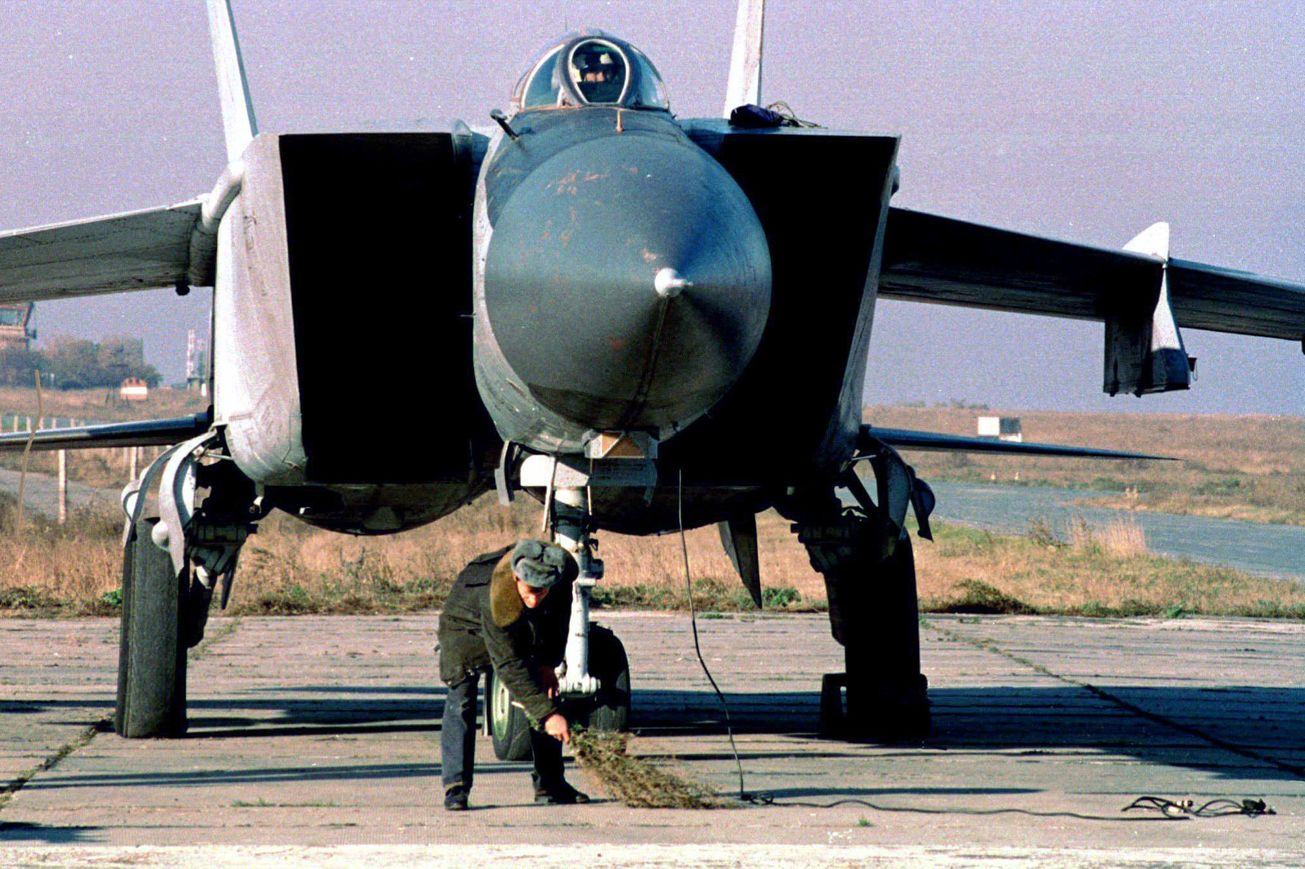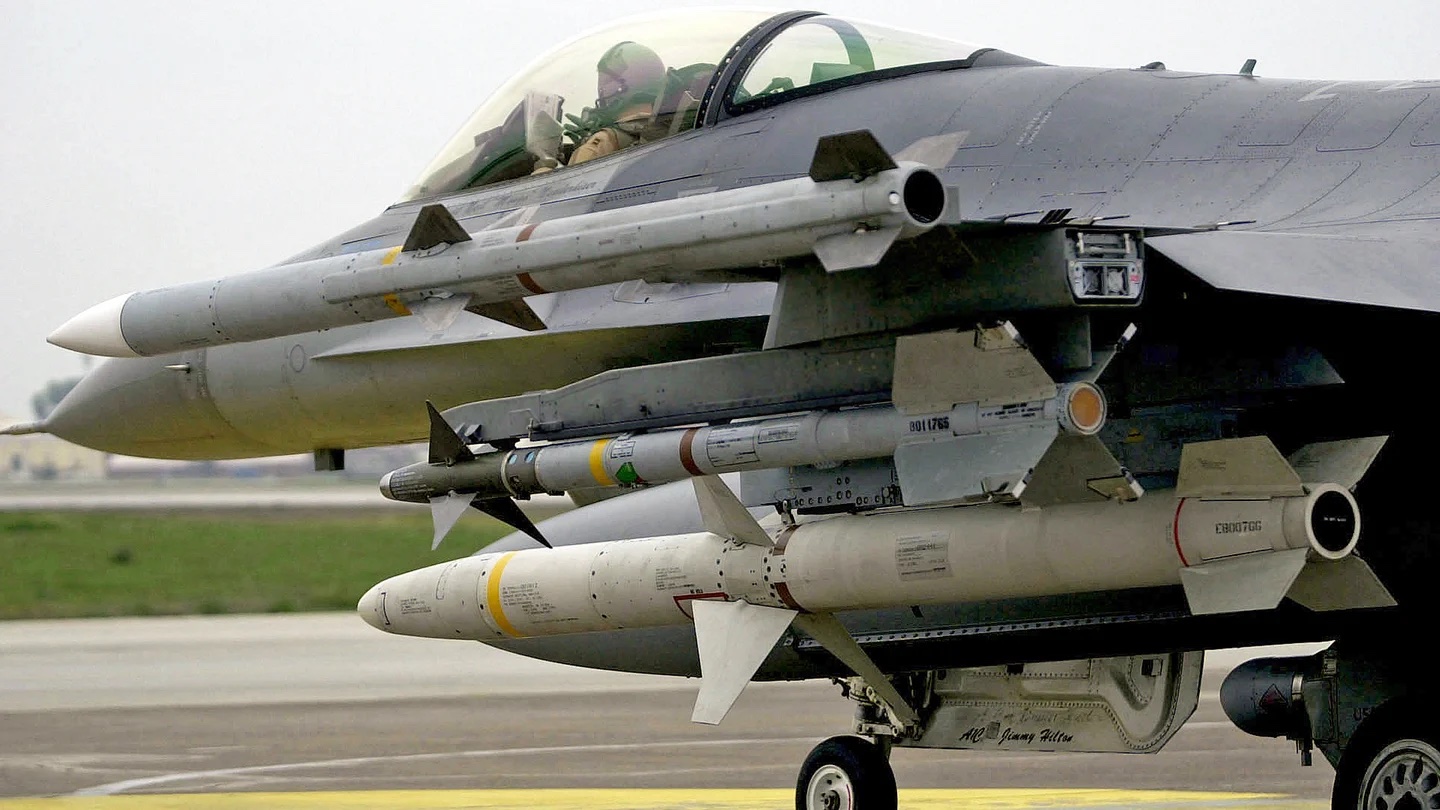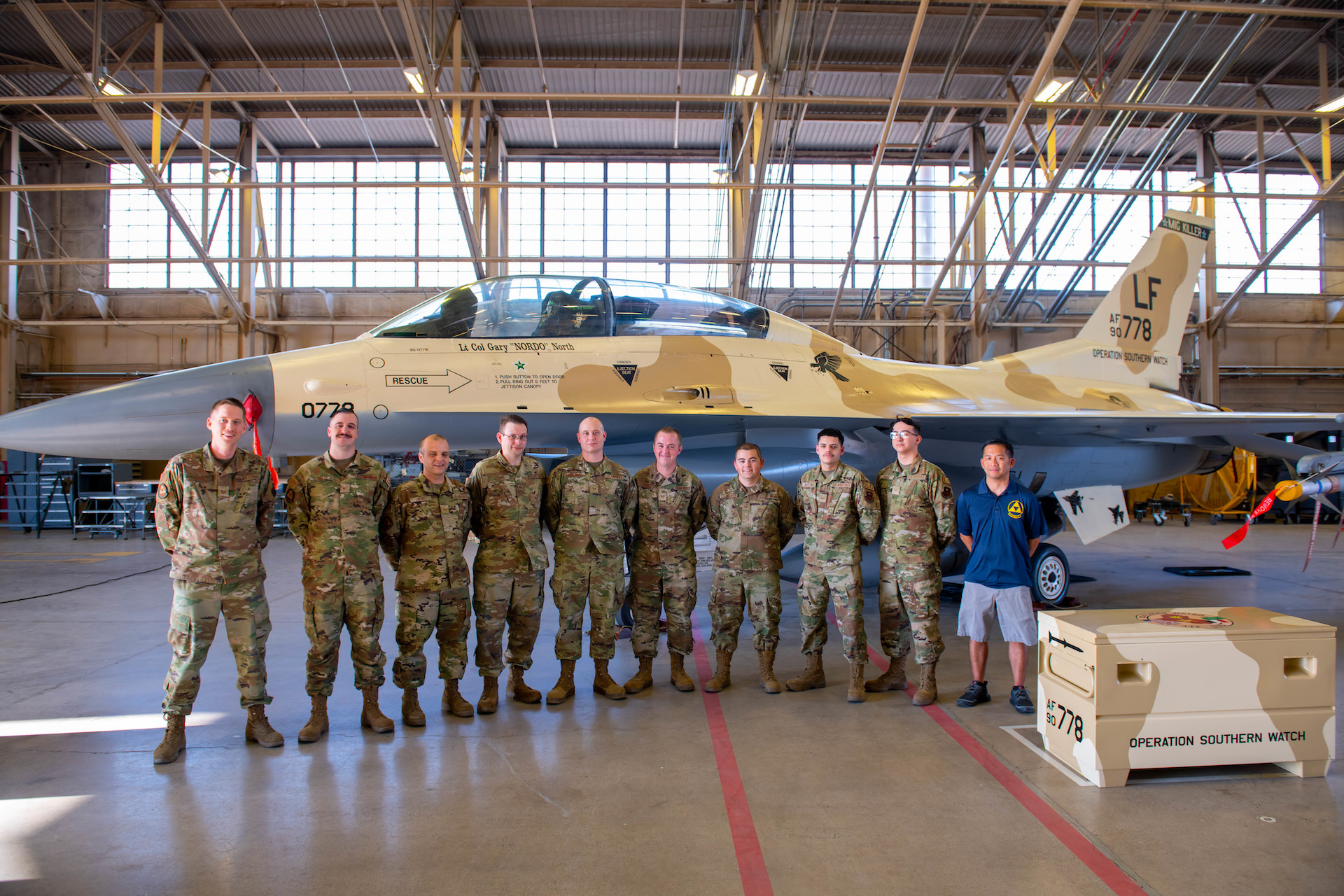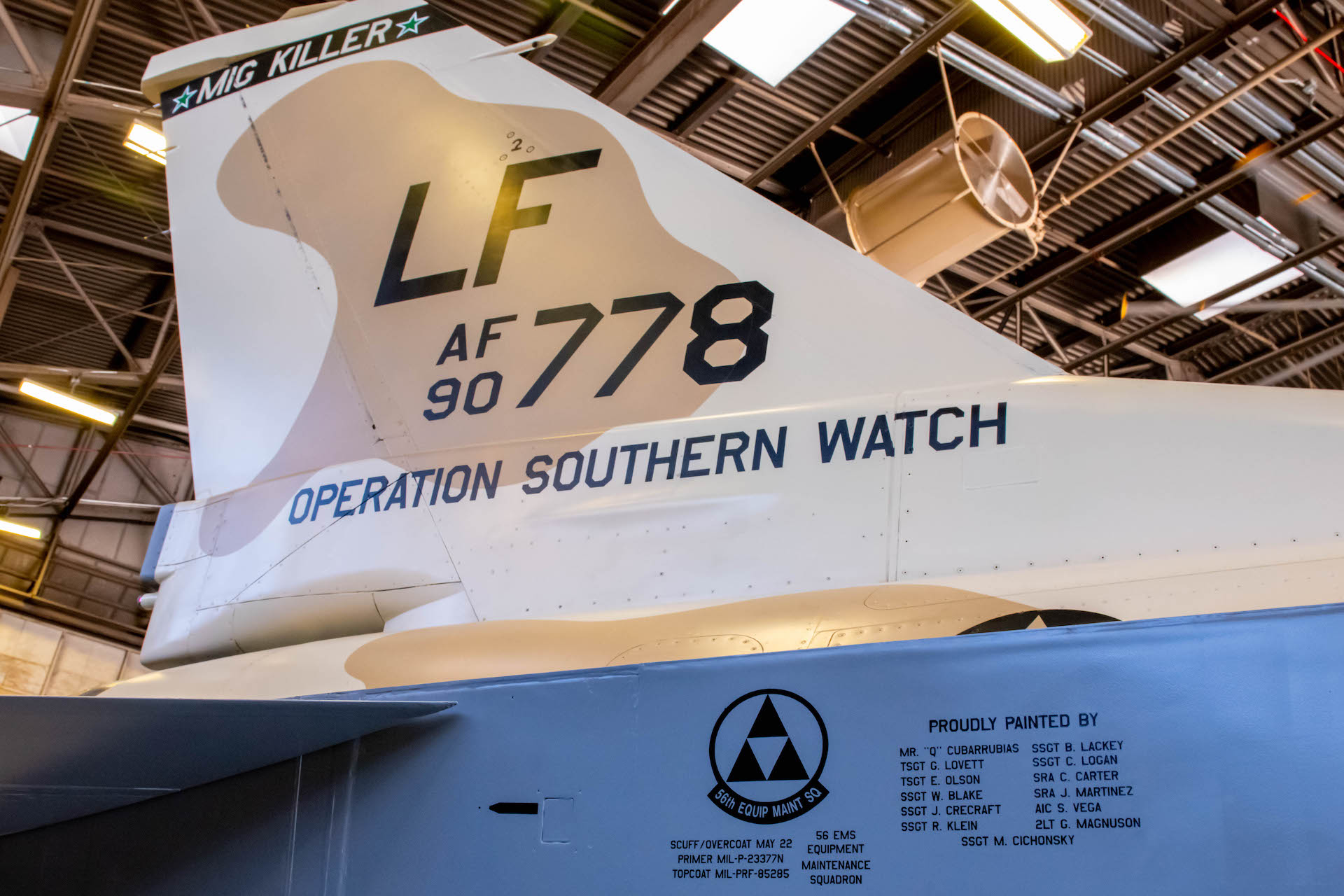Back in 1992, the then U.S. Air Force Lt. Col. Gary “Nordo” North, callsign “Benji 41,” made history as the first USAF pilot to score an air-to-air victory in an F-16 Viper and for the first kill with the AIM-120 Advanced Medium-Range Air-to-Air Missile, or AMRAAM, ever. Using the relatively new combination of an F-16 and an AIM-120A missile, North downed an Iraqi MiG-25 Foxbat-E during a tense period between Iraqi and coalition forces. Doing so put North’s name in the history books, and earned his F-16D the nickname “MiG-Killer.”
The anniversary of this landmark moment took place three decades ago as of yesterday, on December 27, 1992, during an Operation Southern Watch (OSW) sortie. Stretching from August 1992 to March 2003, OSW saw American, British, and, until 1998, French forces monitor and patrol the skies of southern and south-central Iraq in a bid to ensure Iraqi compliance with United Nations Security Council Resolution 688 (UNSCR 688) of April 5, 1991. UNSCR 688 prohibited Iraqi rotary and fixed-wing aircraft from entering airspace south of the 32nd, and later 33rd, parallel (circles of latitude 32 and 33 degrees north of the Earth’s equator).
During the period after the end of the Gulf War, it was clear that Saddam Hussein’s air force was not about to abide by UNSCR 688. Coalition forces were targeted by Iraqi radar surveillance systems, surface-to-air missiles (SAMs), and anti-aircraft artillery in response to UN sanctions against the country — all pointing to the possibility that, at some stage, the no-fly zone would be violated by Iraqi aircraft. This is exactly what happened on December 27, 1992, leading to the historic clash between North’s F-16 and an Iraqi MiG-25.
December 27 started as a fairly ordinary day for North. At approximately 10:42 A.M. local time, he led a group of four USAF F-16s on a routine mission before he received the news that an Iraqi aircraft had violated the no-fly zone. Refueling from a KC-135, the group of F-16s intercepted a transmission between a group of F-15 Eagle fighter jets and an E-3 Sentry Airborne Warning and Control System (AWACS) that stated an Iraqi fighter had indeed crossed the parallel. While the F-15s attempted to pursue the fighter (identified by one F-15 pilot as a MiG-25 interceptor), they were forced to leave the area due to low gas reserves.

North and his wingman quickly refueled, with only enough gas to fly their assigned on-station time in the no-fly zone. The two pilots swiftly crossed into southern Iraq, leaving the third and fourth F-16s to refuel fully from the KC-135.
AWACS soon alerted North and his wingman that a second Iraqi aircraft was heading toward the no-fly zone, and ordered the two F-16s to intercept it. A third Iraqi aircraft was also spotted, which AWACS alerted North to intercept, this one crossing the no-fly zone approximately 30 miles west of the two F-16s, which subsequently doubled back to safety before it could be engaged.
Before long, AWACS alerted North to a fourth Iraqi aircraft approaching the no-fly zone. As the two Vipers flew to intercept, they were tracked by an Iraqi SAM site. At this stage, North ordered the other two F-16s, having finished refueling, to fly north at their best possible speed.
North began coordinating a plan to engage the aircraft. Here, he created a tactical offset to the north in order to ‘bracket’ it between all four F-16s and the 32nd parallel. In doing so, the Iraqi fighter would be forced to engage the F-16s, the outcome of which North was unequivocal about in his recollections of the event:
“Someone was going to die within the next two minutes,” he noted, “and it wasn’t going to be me or my wingman.”
With one Iraqi fighter in sight, North was able to confirm the aircraft as a Soviet-built, Iraqi MiG-25, which was armed with AA-6 Acrid radar-guided missiles. Directing his wingman to employ his electronic jamming pod, North requested permission to fire, and was eventually given the order: “CLEARED TO KILL, CLEARED TO KILL, HE’S A BANDIT, BANDIT!”

At a distance of approximately three nautical miles, at fifteen degrees nose high and fifteen degrees right bank, North targeted the MiG-25 and launched one of his F-16’s two AIM-120 missiles, destroying the jet. As he recalled in 1998 on seeing the impact of the missile:
“I saw three separate detonations, the nose and left wing broke instantly, and the tail section continued into the main body of the jet, and finally one huge fireball.”
F-16s had been in service with the USAF for some time by this stage. The F-16A, the initial single-seat production model, first flew in December 1976, while the first operational example was delivered to the 388th Tactical Fighter Wing at Hill Air Force Base, Utah, in January 1979. By the mid-1980s, the F-16C/D entered service. These versions saw the introduction of a host of new upgrades, including new cockpit displays and enhanced radars, which provided for longer-range missile engagements, especially when paired with the AIM-120. The U.S. F-16 fleet first saw action in 1991 during the Gulf War – 249 F-16s were deployed to the region, where they flew almost 13,500 sorties.

As for F-16 kills, the type has achieved over six dozen in its career. The first came on April 28, 1981, when an Israeli F-16A ‘Netz’ shot down a Syrian Mi-8 over Lebanon. Hours later, another Mi-8 was taken by another IAF F-16. The first fighter kill by an F-16 came on July 14, 1981, when a Syrian MiG-21 fell victim to an IAF F-16. Israel would subsequently rack up numerous air-to-air kills with their F-16s.
The Mikoyan-Gurevich MiG-25, NATO reporting name “Foxbat,” was introduced nearly a decade before the F-16. The first prototype flew in 1964, and the aircraft went on to enter service with the Soviet Air Defense Force in 1970. Capable of a top operational speed of Mach 2.8, the MiG-25 initially spooked the West and helped prompt the scramble to develop the F-15. This was before the Foxbat’s true capabilities and limitations were understood. Alongside their high speed, MiG-25s were also capable of flying at high altitudes, with a ceiling of some 80,000 feet, aiding their performance as interceptor and reconnaissance aircraft. While they were undoubtedly hard to catch, they never materialized into the threat that initially so concerned the Pentagon and the intelligence community. As for Iraq, going into Desert Storm, it only possessed a few dozen of these huge tactical jets. That number dropped significantly after that operation concluded.

The combination of F-16s and AIM-120 missiles was a very big air combat development. Introduced in the early-1990s, the AIM-120 soon proliferated throughout the USAF’s F-16 fleet. The missile was designed to replace the semi-active radar-homing AIM-7 Sparrow. Yet prior to the early-1990s, few F-16s were equipped with AIM-7 Sparrow. More commonly, F-16s carried AIM-9 Sidewinder missiles before this time – short-range air-to-air missiles first adopted by the USAF in the mid-1960s.
Primarily a beyond-visual-range missile, the AIM-120 is capable of ‘fire-and-forget’ engagements, and is also capable of engaging targets at closer range. With its introduction, F-16s were afforded a massive leap in air-to-air capability, which was a step in further turning what was originally designed as a multi-role ‘daytime’ light fighter into a far more capable, day or night, all-weather, jack-of-all trades, medium-fighter air combat solution. The AIM-120 and F-16 combo also further bridged the divide between the capabilities of a heavy fighter, like the F-15 Eagle, and the F-16. A small number of AMRAAM missiles were deployed during Operation Desert Storm by F-15s, but none achieved a kill. F-16s would go on to make many additional kills using the AIM-120 during multiple conflicts. Today, AIM-120s are near universal staples of the F-16’s wingtip rails, a configuration of which you can read more about here.

AIM-120A and AIM-120B missiles were the standard until 1996 when an improved ‘C’ version was introduced. The latest AIM-120D missiles feature substantially more range, without breaking the classic AMRAAM mold line and dimensions, which you can read more about in this past War Zone feature. Indeed, the rise of the AIM-120 became synonymous with the F-16, as the missile ushered in a new era of air-to-air missile capabilities and ‘democratized’ higher-end aerial combat via active radar missiles that could be used by lighter fighters.
Both North, and the F-16D he flew in Iraq, went on to have an interesting history after 1992. On active duty, North flew 83 combat missions across Operations Desert Storm, Southern Watch, Iraqi Freedom, and Enduring Freedom, and went on to retire as a four-star general who served as commander of Pacific Air Forces between 2009 and 2012.

Meanwhile, North’s F-16D continues to fly with the 310th Fighter Squadron at Luke Air Force Base (AFB), Arizona, and was given a heritage desert brown color scheme in the summer of this year to commemorate the 30th anniversary of that first USAF F-16 kill. The new livery was completed by 12 Fabrication Flight Airmen assigned to corrosion control at Luke AFB, and, according to the Air Base, required 1,500 man-hours and over 13 gallons of paint.


Aided by upgrades, F-16s are still the backbone of the USAF’s tactical jet fleet, as well as many allied forces, and have undertaken operational duties in the Middle East more-or-less continuously since 1992. Moreover, F-16s and AMRAAMs continue to be produced to this day in ever more capable iterations, and, all told, will remain central components of the USAF for decades to come.
Contact the author: oliver@thewarzone.com and tyler@thedrive.com
